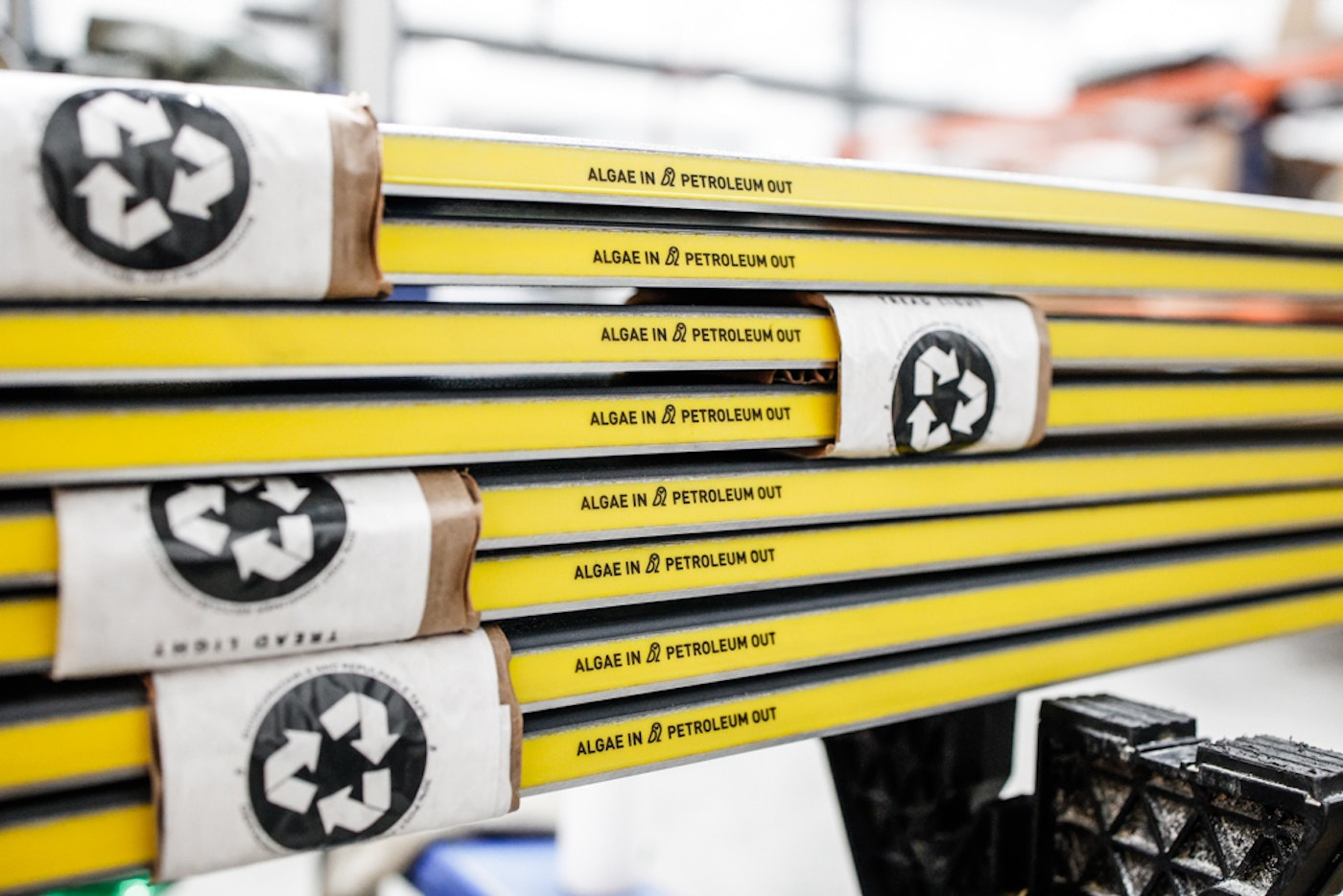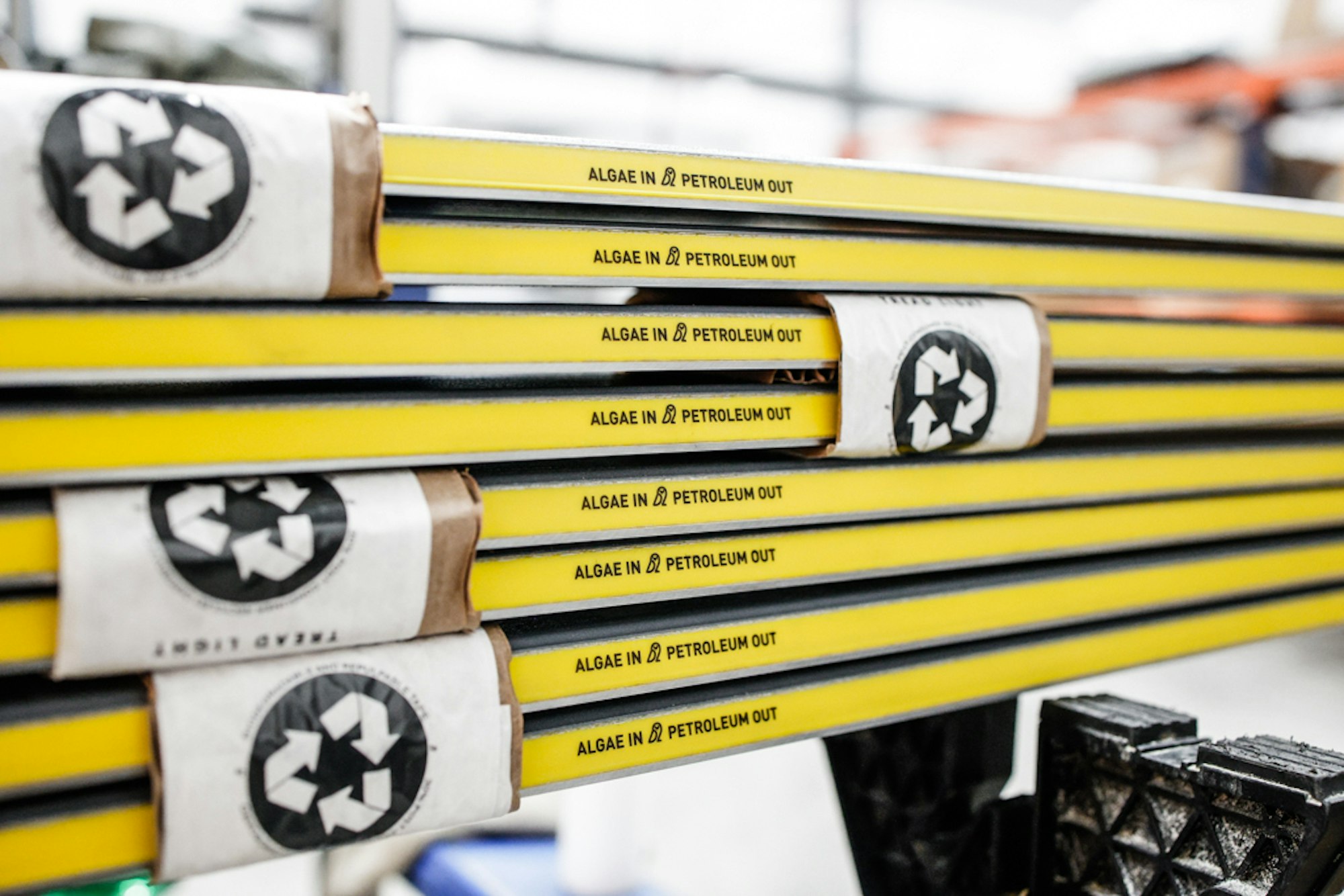Over the weekend, something pretty strange happened in the skiing world. A marketing turn caught the world’s attention. In the season of “cool off with these deep powder shots,” it’s remarkable that anyone could captivate the attention of the outdoors world steeped in mountain biking, fly fishing, and rock climbing. And yet this single perfect, slow-mo pow shot briefly set the world on fire. The ski that made that sweet turn came to life from the mind of Pep Fujas whose newest project, WNDR Alpine has been making waves in the ski world for two years now. Fujas was riding the new Reason 120 powder tool, and we caught up with him to see what the hype was all about.
WNDR has seen enormous success with its Vital 100 and Intention 110 skis. With the Reason 120, you’ve gone even bigger—this new ski is on the fatter side. Tell us about the inspiration for the Reason 120.
The creation of the Reason 120 is a few years in the making. The initial plan was to launch this powder-plundering tool in our second season, since all of us here at WNDR are powder junkies. After sending out a survey to our Friends of WNDR (FOW) and taking some input from our customer base, we saw that majority of our market was more interested in a narrower-waisted ski. But, on a personal level, my first order of business when I joined WNDR Alpine was to create a 120-mm waisted ski that I could take to Japan and bounce my way through the depths.




The inspiration comes from a combination of my past involvement with ski design, my desire to effortlessly float and play through the deepest environments, input from Matt Sterbenz, as well as our engineers and our materials scientists at Checkerspot. A ski’s design comes down to a sum of the whole. The most important question is, what is the ski going to be used for? From there, you can work backward to create that particular shape, asking questions like: What are the optimal lengths, width, sidecut radius, taper, and rocker profile? I really wanted this ski to be the proverbial Swiss army knife of powder skiing. It needed to be nimble, responsive in deep, not so deep and marginal conditions. It needed to have a stable, non-twitchy platform for letting your skis run and, most of all, it had to inspire creativity. There are hundreds of ways to make a turn, depending on the environment, terrain and snow quality in front of you. Do you get aggressive, stand tall, swivel your tails and airplane pop? Do you smear, smack, steer, slarve and carve? Or do you take a back seat and let the skis do the driving? The combination of geometries we zeroed in on really allows for that freedom of expression.
With WNDR’s camber/reverse camber profile choices, skiers are able to hone the ski for their specific location and style. In what conditions will the Reason 120 excel? Why would you choose the camber or reverse camber profile on this ski?
This is a great question, and one we get asked time and time again, particularly because the average skier is hesitant about committing to a reverse camber ski. I think it’s hard for people to imagine that a reverse camber ski can perform given the historical conditioning that camber is what makes the ski respond. Would Bode Miller race on a reverse camber ski? No, but you and I are not Bode Miller and, quite frankly, I’d probably only have fun on Bode Miller’s race skis for a few runs before either I’d be yard-saled on the side of the run, or ready to get back on something that has a few more tricks up its sleeve. I digress…
The reverse camber/camber option is heavily dependent on your intended objectives, location and skiing style. It’s also dependent on how much reverse camber the ski actually offers. Some skis, like the old K2 Hellbent had a drastic amount of reverse camber, which probably helped to steer the general public away from its design. Our reverse camber, on the other hand, is very minimal.
But what makes the most sense for you? Let’s start with your objectives: How much in-bounds hardpack/mixed conditions will you be skiing? If your answer is 80-percent resort, 20-percent backcountry/sidecountry, camber is most likely your choice, so you can feel the springy energy and response out of a powerful turn. And while you can still drive a reverse camber ski hard and the edge will hold due to the sidecut initiating when you’re on edge, you won’t get that same transitional rebound camber provides.
On the flip side, are you more of a creative skier in and out of bounds? Do you want to experience a new way to ski or are you comfortable skiing the way you always have? Your opportunity for creativity is bolstered by our reverse camber skis, as they offer greater forgiveness and have a penchant for a little bit deeper snow.
Now, let’s move on to location. Will you be in tight trees? Couloirs? Open faces? Continental or maritime snowpack? Do you need to pivot quickly, or do you like to hop turn like Scott Schmidt? Without camber in your way, our reverse camber skis allow you to make micro-adjustments if conditions change or you see a way to maneuver through a space you hadn’t anticipated. They allow you to be incredibly light on your feet and somewhat non-committal as there is an extra degree of forgiveness, all without sacrificing edge hold when you get the ski up on edge.


On the other side of the coin, if you find yourself consistently skiing ice, boilerplate and generally firmer conditions, the little bit of extra edge contact of a cambered ski will be favorable. One last consideration is the way you ski or the way you would like to ski: Reverse camber allows for a wider range of turn styles, while camber prefers a more traditional athletic stance and driving the ski with your shins. Feel free to check out our blog on Camber vs. Reverse Camber if you want to get the full, nitty-gritty rundown on the two options.
How is WNDR’s proprietary, bio-based AlgalTech integrated into the Reason 120? How does this construction improve the ski?
There are two components of AlgalTech, the Algal Wall and Algal Core. The Algal Core is the whole core component made up of the cast urethane Algal Wall and algal hard foam stringers that are vertically laminated in between our domestically sourced aspen wood.
This year we developed a new Algal Wall formulation that is both more impact resistant and has a higher bio content, coming in at 68-percent bio-based. We spent a lot of time refining the performance characteristics of Algal Wall this off season, and landed on a formulation that offers roughly three-times better damping performance than the traditional, petroleum-based ABS sidewalls most of us are used to. This Algal Wall, which is poured into channels cut into the core, natively seeps into pores in the wood structure and provides a seamless bond without the use of resins, while also reducing the waste produced by trimming traditional sidewalls to shape. While testing, we noticed the wood in the core breaks before the bond with the cast urethane breaks, which is pretty cool.
Now onto the core… In a typical ski core, the wood is a great conduit for vibrations. Without anything to dampen those vibrations, however, the energy tends to continue from side to side with little interruption. The algal hard foam stringers in our Algal Core also provide a means to reduce those vibrations created, thus providing a less chattery ski. It also serves to lighten up the ski a touch. In essence, our AlgalTech materials improve durability, reduce vibration, lighten the ski and reduce landfill waste during fabrication.
WNDR has quickly established a strong community through its products and some in-person events. Any plans for more of this heading into next season?
The answer is a resounding YES! We love our community and want each and every person who rides our skis to enjoy the backcountry environment with the same fervor we do. We offer Rendezvous events, which are backcountry safety, route finding and avalanche awareness courses geared towards initial and ongoing education.
We also offer an event called the WNDR Roost, which is a bit more of an immersive, experiential event that spans three full days and incorporates situational avalanche education, mindfulness, riding with FOWs and an exclusive look into the future developments here at WNDR Alpine. Last year we hosted our first female-only Roost and couldn’t have been more stoked with the outcome. With the guidance of FOW’s Melissa Gill, Nikki Champion and Emilie Drinkwater, the ladies who participated left more confident than ever, with new ski partners and sore cheeks from smiling so much. In the future, we plan on expanding these events based on each of our skis’ intended uses.
A Reason Roost in the heart of powder paradise is definitely on the horizon!
You’ve had the chance to rip on plentiful powder-focused skis, so what makes this one different? Why are you and the team at WNDR excited about the Reason 120?
It provides for a blend of uses, it’s a ski that works off of my experience skiing on a variety of different soft snow tools and blends all the best characteristics into a single platform. Any soft snow out there should be nervous with this ski in its midst. It also rounds out our quiver of purpose-built tools with thoughtful intent, giving skiers an option for just about any backcountry environment and snowpack they may encounter.
Anything else you want to say?
Tread Light and Charge Hard, my friends!
![[Q&A] Pep Fujas gives FREESKIER the exclusive rundown on WNDR Alpine's all-new powder ski, the Reason 120](https://www.datocms-assets.com/163516/1751502239-reason120_feat.png?auto=format&bg=FFFFFF&w=100)
![[Q&A] Pep Fujas gives FREESKIER the exclusive rundown on WNDR Alpine's all-new powder ski, the Reason 120](https://www.datocms-assets.com/163516/1751502239-reason120_feat.png?auto=format&bg=FFFFFF&w=1200)

![[GIVEAWAY] Win a Head-to-Toe Ski Setup from IFSA](https://www.datocms-assets.com/163516/1765920344-ifsa.jpg?w=200&h=200&fit=crop)


![[GIVEAWAY] Win a Legendary Ski Trip with Icelantic's Road to the Rocks](https://www.datocms-assets.com/163516/1765233064-r2r26_freeskier_leaderboard1.jpg?auto=format&w=400&h=300&fit=crop&crop=faces,entropy)




![[GIVEAWAY] Win a Head-to-Toe Ski Setup from IFSA](https://www.datocms-assets.com/163516/1765920344-ifsa.jpg?auto=format&w=400&h=300&fit=crop&crop=faces,entropy)


![[Q&A] Pep Fujas gives FREESKIER the exclusive rundown on WNDR Alpine's all-new powder ski, the Reason 120](https://www.datocms-assets.com/163516/1751502239-reason120_feat.png?auto=format&bg=FFFFFF&w=2000)